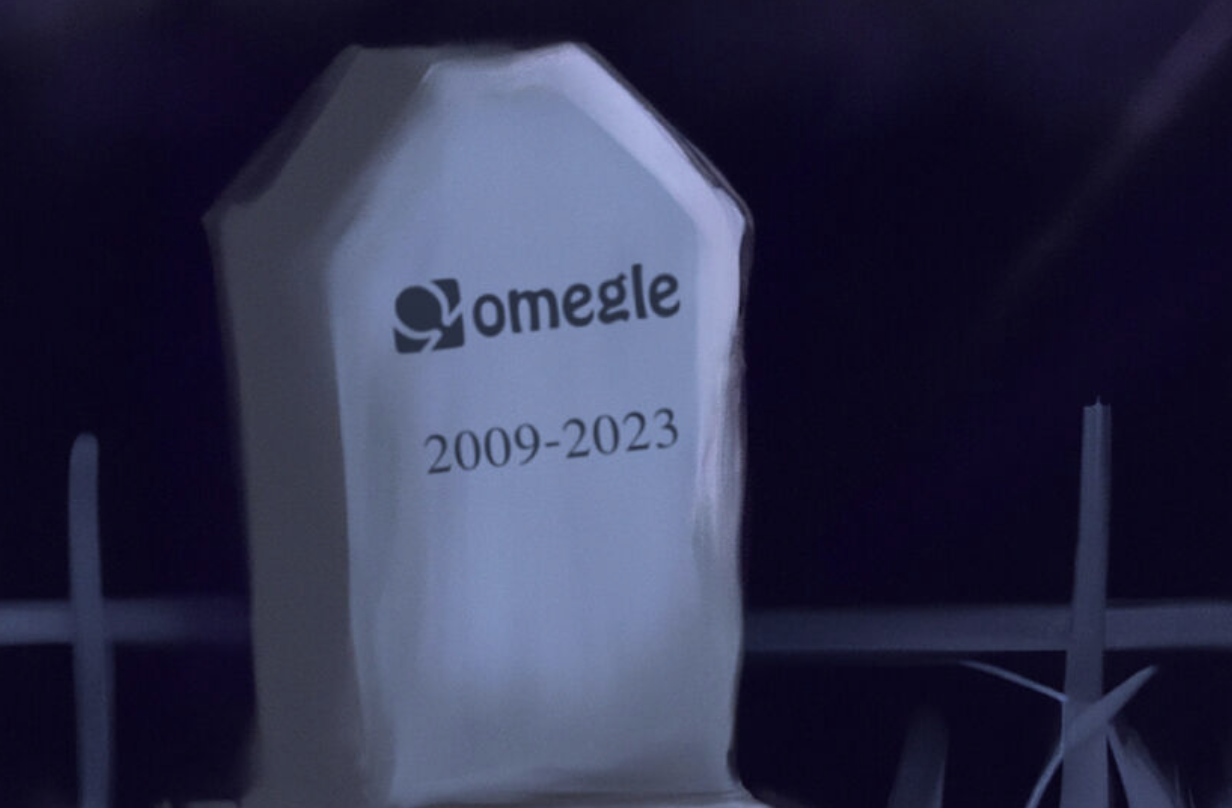Many teens today can and will attest to knowing a substantial amount about the web-based platform Omegle. Many more will tell you about the kind of thing you’d expect from it: exchanging insults with bemused adults, meeting the occasional influencer, talking to kids from other continents, quickly skipping past the naked man urging you to stay on. But that was all part of the fun!
Launched in 2009 by an eighteen year old living with his parents, Omegle was never supposed to become what it did, a chat service accommodating millions of daily users at the height of its success. The creator, a survivor of childhood rape living in a small town without access to diverse ideas, was not only drawn to the knowledgeable people he could meet online but to the safety from them the internet provided.
I was acutely aware that any time I interacted with someone in the physical world, I was risking my physical body. The Internet gave me a refuge from that fear. I was under no illusion that only good people used the Internet; but I knew that, if I said “no” to someone online, they couldn’t physically reach through the screen and hold a weapon to my head, or worse. I saw the miles of copper wires and fiber-optic cables between me and other people as a kind of shield – one that empowered me to be less isolated than my trauma and fear would have otherwise allowed.
Leif K-Brooks, founder of Omegle
The premise of the site was alluring: upon entering the site the algorithm would randomly pair you with a stranger anywhere in the world; you could talk to your “partner” through text or video call, all through the site, and literally skip past any conversations you didn’t like. Whilst in hindsight this concept might have seemed like a recipe for disaster, Omegle was actually a temporary haven from the horrors of the real world for both the users and the site’s creators.
Over the years, people have used Omegle to explore foreign cultures; to get advice about their lives from impartial third parties; and to help alleviate feelings of loneliness and isolation. I’ve even heard stories of soulmates meeting on Omegle, and getting married. Those are only some of the highlights.
Leif K-Brooks, founder of Omegle
Then came the downfalls for which many disapproving parents and teachers know the site. The site’s original specifications of users either needing to be 18+ (or 13+ with parental permission) was problematic on its own, as Omegle’s creators immediately knew that the platform would enable adults and children interaction via unmonitored video. Many ‘strangers’ (as the site dubbs them), would go on the site to have shocking interactions with minors, pursuing their contact information to continue communication outside the site and coercing them into preforming sexual acts on camera.
One such pervert, a man in his late thirties, matched with a girl who was eleven years old at the time. His predatory actions were heavily detailed in a lawsuit his victim filed against Omegle. Over the course of three years he groomed her online, sometimes making her ‘perform’ for him and his friends, and encouraging her to go back to Omegle to find other kids for him to ‘talk to’. In January 2018 the predator’s house was raided by law enforcement and 3055 files of child pornography were found on his computer, including 220 photos and videos of the eleven year old he matched with on Omegle.
Omegle acknowledges that its product is home to predators but puts the onus on its users to not be preyed upon. Up through May 2021, its homepage read “Predators have been known to use Omegle, so please be careful.“
Lawsuit against Omegle filed by the girl groomed by the aforementioned pervert
According to Omegle’s creator, as soon as these instances started to rise up Omegle immediately implemented a video monitoring policy. Omegle worked with law enforcement agencies such as the National Center for Missing and Exploited Children to put perverts who used the site behind bars. But while this achievement is applaudable, several former site users, including the author of this article herself, can attest to never seeing a change in the graphic nature of the site, even after the supposed implementation of video monitoring.
Data published by the BBC found that during the pandemic Omegle usage doubled, and with it malpractice on the site. On November 9th 2023 the site shut down completely for reasons attributed to misuse. According to the founder of Omegle, the stress and expense of monitoring and running the site was simply ‘too much’. Now if you try to log on to the site you are taken to the founder’s statement on the shutdown.
Whilst the recent shutdown of the site bore the approval of many adults in law, education, or simply parents, many teens who were raised on the platform have another take on things. There’s been a boom on social media of teens recounting nostalgic memories on the site, or criticizing its sudden removal. But whilst it’s important to recognize that for many kids (especially those with internet access during the Covid pandemic) Omegle was an escape from a boring reality, its exploitative nature was a cage for many others.
Virtually every tool can be used for good or for evil, and that is especially true of communication tools, due to their innate flexibility. The telephone can be used to wish your grandmother “happy birthday”, but it can also be used to call in a bomb threat. There can be no honest accounting of Omegle without acknowledging that some people misused it, including to commit unspeakably heinous crimes.
Leif K-Brooks, founder of Omegle
Bibliography:
K-Brooks, Leif . “Omegle: Talk to Strangers!” Omegle, 9 Nov. 2023, www.omegle.com.
Liang, Annabelle . “Omegle Shut Down: Video Chat Website Closed after Abuse Claims.”
BBC News, 9 Nov. 2023, www.bbc.com/news/business-67364634.
United States District Court. Case 3:21-Cv-01674-MO . 13 July 2022.

